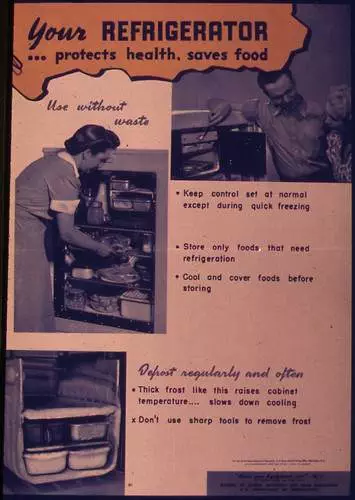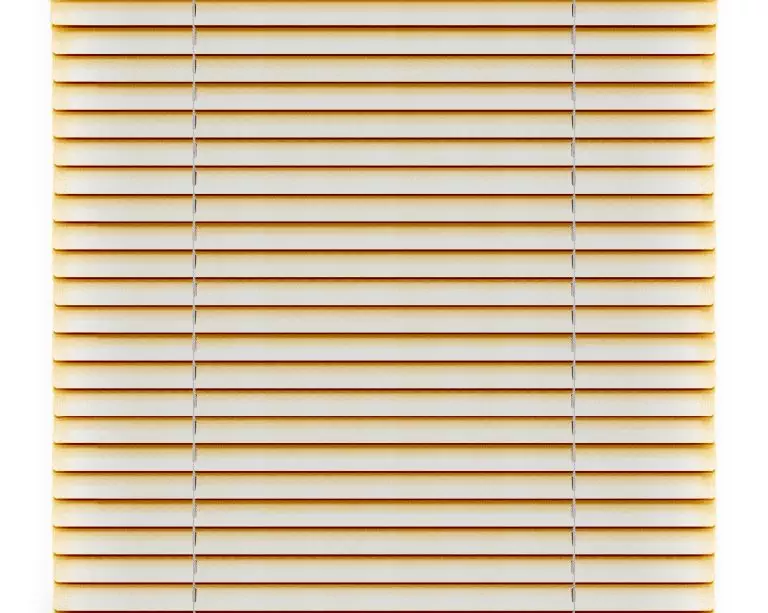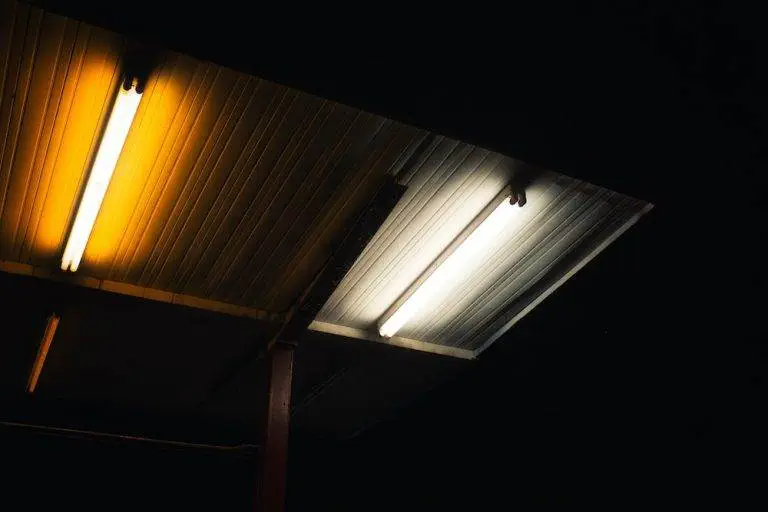Fix a Broken Refrigerator: 6 Easy DIY Steps
Is your refrigerator not cooling properly?
Is the ice maker not working?
Or is there damage to the inside of your fridge?
Whatever the issue, a broken refrigerator can be a major inconvenience. But before you rush out to buy a new refrigerator, it’s worth considering repairing it instead.
Many common problems with refrigerators, such as a malfunctioning freezer door or freezers not freezing, can be simple fixes.
Firstly, it’s important to understand that refrigerators and freezers are complex appliances with many different components.
The most common problems include issues with the refrigerant, compressor, or thermostat. However, other issues, such as a broken seal on the refrigerator door or damage to the inside of the fridge, can also cause problems.
Simple fixes like cleaning the condenser fan can sometimes solve these issues, but in more serious cases, it’s best to call a repair technician.
Several factors should be considered when deciding whether to repair or replace your refrigerator or freezer. These include the age and brand of your refrigerators and freezers and the cost of repairs versus buying a new refrigerator.
Additionally, if you’re experiencing issues with your freezer door or thermostat, it may be worth considering whether a repair or replacement is the best option.
So let’s dive in!
Easy Fixes for Common Refrigerator Problems
Fixing a Broken Refrigerator Seal
A broken refrigerator seal can cause your fridge or freezer to work harder, leading to higher energy bills and food spoilage.
Fortunately, fixing a broken seal is an easy fix you can do yourself or hire a repair technician for a reasonable repair cost.
- Start by cleaning the seal and door jamb with warm soapy water to remove any dirt or debris. If you notice any wear and tear on the seal, consider installing a new gasket or contacting a repair technician for assistance. Make sure to clean the condenser to ensure optimal performance.
- Check the gasket seal and hinge for any cracks or tears. If there are any, you must call a repair technician to replace the entire seal. This is a common issue with refrigerators.
- To replace the gasket, start by removing the old one from the door of your refrigerator. If you are not confident performing the task, consider contacting a repair technician specializing in refrigerators. Additionally, it may be worth checking if your thermostat needs to be adjusted to ensure optimal performance.
- Clean the area where you removed the old seal and gasket with warm soapy water and dry it thoroughly. This is an important step to ensure that the heater is functioning properly and to prevent any leaks from occurring. Additionally, it is recommended to clean the area with a 70 percent isopropyl alcohol solution for optimal results.
- Next, attach the new gasket by pressing it into place along the edge of the door of your refrigerator. Make sure to check the thermostat and capacitor before replacing the gasket.
Fixing a Broken Refrigerator Door
A broken refrigerator door can be caused by worn-out hinges or damage to the door itself. A faulty gasket, terminal, or capacitor can also contribute to the problem.
Here’s how you can fix it:
- First, check if there are any loose screws on your refrigerator’s door hinges and tighten them if necessary. Additionally, inspect the gasket around the door to make sure it is properly sealed. If the terminal is not functioning properly, consider replacing it. Lastly, check the timer to ensure it is set correctly.
- If the tightening step doesn’t work, lubricate your hinges with WD-40 or another lubricant spray. Don’t forget to check the gasket and switch the timer before applying the lubricant.
- If none of these steps work, you may need to switch your hinges entirely. Check the gasket and timer as well.
Fixing a Broken Refrigerator Ice Maker
If your ice maker is not working correctly or has stopped making ice altogether, here’s what you can do: Step 1: Check the switch to make sure it’s turned on.
Step 2: Inspect the timer to see if it needs to be replaced.
Step 3: Examine the gasket around the ice maker to ensure it’s properly sealed.
- Check that your water supply line is connected correctly with the gasket in place and that there are no kinks in it. Also, make sure to switch on the timer as the next step.
- Step up and ensure that your freezer gasket is properly sealed and the switch is turned on, then ensure that your freezer temperature is set below 10 degrees Fahrenheit (-12 degrees Celsius).
- Check if there are any clogs in your ice maker’s water supply line or inlet valve, and clean them out if necessary. As a first step, inspect the switch and gasket for any damage or wear.
- If the gasket or switch is faulty, try fixing it first. If none of these steps works, consider replacing your ice maker entirely.
Fixing a Broken Refrigerator Drawer
If your refrigerator drawer is not sliding correctly or is broken, here’s how you can fix it in a step-by-step manner:
1. Check the gasket of the drawer.
2. If the gasket is intact, try adjusting the alignment of the drawer.
3. Consider replacing the gasket if the drawer still doesn’t slide properly.
- Remove the drawer from your refrigerator and check the gasket for any damage or wear and tear. Don’t forget to follow this important step!
- If there are any cracks or breaks, the first step is to check the gasket. Consider replacing the entire drawer if necessary.
- Step 1: If there is no visible damage, clean the tracks and gasket where the drawer slides in and out of your fridge with warm soapy water.
- Step 1: Lubricate the tracks with cooking spray or another lubricant to help the drawer glide more smoothly. Step 2: Check for any damage to the gasket and replace if necessary.
Fixing a Broken Refrigerator Shelf
A broken refrigerator shelf can be caused by wear and tear over time or accidental damage. If you notice your refrigerator gasket is damaged, it’s important to replace it as soon as possible to prevent further damage.
Here’s a step-by-step guide on how you can fix the broken shelf:
- Start by removing the damaged shelf from your fridge.
- Check for any cracks or breaks in the shelf itself; if so, take the necessary step to replace it entirely. Also, inspect the gasket for any damage or wear and replace it if needed.
- If there is no visible damage to the shelf, the first step is to clean it with warm soapy water. Make sure to check the gasket for any signs of wear or tear before proceeding.
- Finally, reattach the shelf to your fridge using its original fixtures.
Fixing a Broken Refrigerator Door Shelf
If one of your refrigerator door shelves has broken off or become loose, follow these steps to fix it:
- First, remove all items from your door shelves to avoid falling out during repair.
- Check if any screws need tightening on either side of where the shelf attaches to your fridge door.
- If tightening doesn’t work, look for any visible signs of damage on both sides of where the shelf attaches to your fridge door.
- If there is no visible damage, but it still won’t stay in place correctly, consider purchasing a replacement part for your specific make and model of refrigerator.

Factors to Consider When Deciding to Repair or Replace Your Refrigerator and Freezer
The Scale of the Problem and the Cost of Repairs
The first factor to consider when deciding whether to repair or replace your refrigerator and freezer is the scale of the problem.
If it’s a minor issue like a clogged drain or a faulty thermostat, then repairing it may be the best option. However, if there is a major problem like a compressor failure or a refrigerant leak, replacing it may be more cost-effective in the long run.
When considering repairs, it’s also important to factor in the cost.
If the cost of repairs is more than half of what you originally paid for the appliance, then it may be better to replace it.
If you’ve had multiple repairs on your appliance over its lifetime, this could indicate that it’s time for a replacement.
The Age of the Appliance and Its Worth
The age of your appliance is another important factor to consider when deciding whether to repair or replace it.
As appliances age, they become less efficient and more prone to breakdowns. If your refrigerator or freezer is more than 10 years old and has needed frequent repairs in recent years, then replacing it may be more cost-effective than continuing to repair it.
However, if your appliance is relatively new and has only needed minor repairs in its lifetime, repairing it may still be a good option.
It’s also worth considering how much your appliance is worth – if it’s a high-end model with many features that you use regularly, then repairing it may make sense even if it’s getting up in age.
The Frequency of Breakdowns and Repairs
As mentioned earlier, if you’ve had multiple repairs on your refrigerator or freezer over its lifetime, this could indicate that replacement is necessary.
Frequent breakdowns can not only be frustrating, but they can also be expensive in the long run. If you find yourself constantly calling a repair technician to fix your appliance, then it may be time to consider a replacement.
The Energy Efficiency of the Appliance
Finally, it’s important to consider the energy efficiency of your refrigerator or freezer when deciding whether to repair or replace it.
Newer models are generally more energy-efficient than older ones, which can lead to significant cost savings over time. If your current appliance uses a lot of energy and drives up your utility bills, then replacing it with a more efficient model could save you money in the long run.
How to Fix a Freezer Unit That is Freezing Over
Check the Freezer Door Seal for Any Damage or Gaps
The freezer door seal plays an essential role in maintaining the temperature inside the freezer compartment.
Any gaps or damages in the door seal can cause frost buildup and lead to freezing over of the unit. To check for damage or gaps, inspect the entire perimeter of the seal by running your hand along it. If you feel any cracks, tears, or gaps in the seal, it’s time to replace it.
A faulty door seal can also cause your refrigerator to work harder than necessary, leading to higher energy bills.
Clear Out Any Obstructions in the Freezer Compartment
If there are too many items crammed into your freezer compartment, it can restrict airflow and cause frost buildup. This will eventually lead to the freezing over of your freezer unit.
To prevent this from happening, clear out any obstructions and ensure that there is enough space between items for proper air circulation.
You should also avoid placing hot food directly into the freezer, which can raise its internal temperature and cause frost buildup.
Test the Defrost Timer to See if It’s Functioning Properly
The defrost timer controls when your freezer unit enters defrost mode and how long it stays in that mode. If it’s not working correctly, then frost will build up on your evaporator coils and eventually lead to freezing over of your unit.
To test if your defrost timer is functioning properly, locate it (usually found at the bottom front of the refrigerator) and turn its dial until you hear a click sound.
Wait for around 30 minutes before checking for any temperature change inside your freezer compartment.
Inspect The Defrost Heater For Any Signs Of Malfunction
The defrost heater melts away any ice that has built up on your evaporator coils during defrost mode. If it’s not working correctly, then frost will build up on your coils and eventually lead to freezing over of your freezer unit.
To inspect the defrost heater, unplug your refrigerator and remove the back panel of your freezer compartment. Look for any signs of damage or burning on the heater itself or its connections.
If you find any issues, replace the defrost heater immediately.
Common Repair Problems: Noisy Fridge and Fridge/Freezer Not Cooling
Noisy fridge? Check the fan, compressor, and condenser coils for malfunctions.
A noisy refrigerator can be a big annoyance in your home. It’s not only annoying but also indicates that there might be a problem with your fridge.
The most common causes of a noisy fridge are issues with the fan, compressor, or condenser coils.
The fan is responsible for circulating air throughout the unit and keeping it cool. A malfunctioning fan can cause the fridge to make loud noises.
You can check if this is the issue by opening the door and listening for any unusual sounds coming from inside. If you hear a whirring or grinding noise, then it’s likely that the fan needs to be replaced.
Another potential culprit is the compressor. The compressor is responsible for compressing refrigerant gas to cool down your fridge.
If it’s not working correctly, it can cause loud noises like banging or rattling sounds. This issue requires professional assistance, as replacing a faulty compressor involves handling refrigerant gas.
Lastly, dirty or clogged condenser coils could also be causing your noisy fridge. These coils are located at the back of your refrigerator and help remove heat from the inside.
Over time they may become clogged with dust and debris, which reduces their efficiency, leading to increased noise levels from your refrigerator.
Fridge/freezer not cooling? It could be due to a faulty thermostat, evaporator fan, or compressor.
A refrigerator that isn’t cooling properly is a significant concern, as food may spoil quickly at warmer temperatures. Several components could cause this problem, such as a malfunctioning thermostat, evaporator fan, or compressor.
The thermostat controls how much cold air enters your fridge by monitoring its temperature level continuously.
If it’s broken or misreading temperatures, then it won’t signal for enough cold air to enter, resulting in insufficient cooling of food items.
Replacing the thermostat is the best solution to this problem.
The evaporator fan is responsible for circulating cold air throughout the fridge; if it’s not working correctly, your food items won’t get enough cool air.
You can check if this is the issue by listening for any unusual sounds coming from inside your fridge. If you hear a whirring or grinding noise, then it’s likely that the fan needs to be replaced.
Lastly, a faulty compressor could also cause insufficient cooling of food items in your fridge/freezer. The compressor compresses refrigerant gas to cool down your fridge and freezer compartments.
If it’s not working correctly, it can cause insufficient cooling leading to spoiled food items.
Common refrigerator repair problems include leaks, clogs, and electrical issues.
Consumer Reports has identified several common refrigerator repair problems, such as leaks, clogs, and electrical issues that homeowners face while using their fridges.
Leaks are one of the most common refrigerator repair problems reported by homeowners. Leaks can occur for several reasons, such as a damaged water supply line or defrost drain line.
If you notice water pooling around your fridge or on its floor regularly, there might be an issue with its water supply line or defrost drain line, which needs fixing immediately.
Clogs are another common problem homeowners face where ice buildup inside the freezer compartment impedes the proper cooling of food items.
You can identify if there’s a clog in your freezer compartment when you notice uneven cooling patterns in different freezer sections. In such cases, manually defrosting your freezer could help solve this problem temporarily until you get professional assistance.
Lastly, electrical issues like blown fuses or malfunctioning circuit boards could also cause significant damage to your fridge/freezer units leading to costly repairs/replacements later on.
It’s best to get professional assistance at the earliest sign of an electrical issue with your refrigerator to avoid further damage.
Clearing the Drain Hole and Ports in Your Refrigerator
Importance of Clearing the Drain Hole and Ports
A broken refrigerator is a nightmare for anyone, especially if you have no idea how to fix it. One of the most common issues people face with their refrigerators is water buildup.
Several factors can cause this problem, but one of the most critical reasons is clogged drain holes and ports.
These parts are essential for draining water from your fridge’s defrost cycle, so if they’re blocked, the water will accumulate inside your fridge.
Keeping your drain hole and ports clean is crucial if you want to prevent this issue.
Not only will this help avoid water buildup, but it will also prevent mold growth and nasty odors from developing inside your fridge.
Steps to Clear Your Drain Hole and Ports
Clearing out your drain hole and ports is not difficult. You don’t need any special tools or skills; you only need a vom set or a small brush.
Here are some steps to follow:
- Unplug Your Fridge: Before starting any work on your fridge, make sure to unplug it from the electrical outlet.
- Locate the Drain Hole: The drain hole is usually located at the back of your fridge’s freezer compartment.
- Remove Debris: Use a vom set or a small brush to remove any debris that may be obstructing the drain hole.
- Clean Out Port Holes: After clearing out the drain hole, use either a toothpick or wire hanger to clean out any port holes that may be clogged.
- Check Control Knob: Finally, check the control knob on the side of your refrigerator door to ensure it’s set at an appropriate temperature.
Other Tips for Preventing Water Buildup in Your Fridge
In addition to clearing out your drain hole and ports regularly, there are other steps you can take to prevent water buildup in your fridge.
Here are some tips:
- Don’t Overload Your Fridge: Overloading your refrigerator with food and drinks can cause excess condensation, leading to water buildup.
- Keep Food Covered: Uncovered food releases moisture into the air, contributing to water accumulation in your fridge.
- Check Door Seal: Make sure the door seal on your fridge is tight and free of cracks or tears. A loose seal allows warm air to enter the fridge, causing more condensation.
- Defrost Regularly: If you have a manual defrosting refrigerator, make sure to defrost it regularly as the manufacturer instructs.
Removing and Replacing Your Refrigerator’s Evaporator Fan
What is an Evaporator Fan?
Before we dive into how to remove and replace your refrigerator’s evaporator fan, let’s first discuss what it actually does. The evaporator fan is responsible for circulating cold air throughout your refrigerator.
It works in conjunction with the evaporator coils to maintain a consistent temperature inside the fridge. Without the fan, warm air can build up and cause your food to spoil.
Signs of a Malfunctioning Evaporator Fan
If you notice that your refrigerator isn’t keeping things as cold as it should be, or if you hear strange noises coming from the back of the unit, there’s a good chance that your evaporator fan could be malfunctioning.
Another sign of a faulty fan is if you notice frost buildup on the back wall of your freezer.
Replacing Your Evaporator Fan
Replacing your refrigerator’s evaporator fan is not as complicated as it may seem.
Here are some steps you can follow:
- Unplug your refrigerator: Safety always comes first! Make sure that you unplug your refrigerator before attempting any repairs.
- Locate the evaporator fan: The location of the evaporator fan varies depending on the make and model of your refrigerator. In most cases, it can be found behind the back panel in the freezer compartment.
- Remove any obstructions: Before removing the back panel, make sure to clear out any items from inside the freezer.
- Remove screws holding the back panel in place: Once all obstructions have been cleared away, use a screwdriver to remove any screws holding the back panel in place.
- Disconnect wiring harness: Once you’ve removed all screws holding down the panel, gently pull it away from its position while also disconnecting any wiring harnesses connected to it.
- Remove the old evaporator fan: After accessing where it is located, you can remove the old fan by unscrewing it from its mount.
- Replace with new evaporator fan: Once the old fan is removed, replace it with a new one and screw it into place.
- Reconnect wiring harness: After securing the new evaporator fan in place, reconnect any wiring harnesses that were disconnected earlier.
- Reattach back panel: Carefully reattach the back panel to its original position and screw it back into place.
- Plug the refrigerator in and test: Finally, plug your refrigerator back in and ensure everything is working properly.
Additional Considerations
Before replacing your evaporator fan, it’s important to ensure that other components of your refrigerator are functioning properly as well.
Check your thermostat and heating element to make sure they’re not causing any issues.
Consider upgrading to an Energy Star-rated evaporator fan when making the replacement. These fans are designed to use less energy than their non-rated counterparts, which can lead to significant savings on your energy bill over time.
Servicing the Motor/Compressor and Installing a New Fan Motor
Checking the Components
When your refrigerator is not functioning correctly, checking the motor/compressor components for any issues is essential. The capacitor, timer motor, and heater must be thoroughly inspected to determine if they are causing the problem.
The capacitor is responsible for providing a power boost to start the compressor. If it is faulty or damaged, it will not provide enough power to start the compressor.
A technician can check this component with a multimeter and replace it if necessary.
The timer motor controls when the defrost cycle begins in your refrigerator. If it fails, it can cause frost buildup on your evaporator coils, leading to cooling problems.
A technician can test this component with a multimeter and replace it if needed.
During the defrost cycle, the heater melts any frost accumulating on your evaporator coils. If it malfunctions, ice buildup will occur on your coils, leading to cooling issues in your fridge.
A technician can check this component with an ohmmeter and replace it if required.
Installing a New Fan Motor
If you have determined that you need a new fan motor for your refrigerator, several steps are involved in installing one properly.
- Remove the Door Panel: To access the fan blades and condenser fan motor inside your fridge/freezer compartment, you must first remove its door panel.
- Disconnect Power Supply: Before removing any electrical components from your refrigerator or freezer unit, disconnect its power supply.
- Remove Fan Blades: Once you have removed the door panel of your fridge/freezer unit, carefully remove its fan blades without damaging them.
- Disconnect Old Fan Motor: After removing all screws holding old fan motors in place on their brackets or housings (if applicable), disconnect their wiring harnesses or plugs from other electrical components nearby (such as capacitors, timers, or heaters).
- Install New Fan Motor: Place the new fan motor in the same position as the old one and secure it with screws.
- Reconnect Wiring Harnesses: Connect all wiring harnesses or plugs back to their respective electrical components nearby (such as capacitors, timers, or heaters).
- Reinstall Fan Blades: Once you have reconnected all electrical components properly, put back the fan blades carefully without damaging them.
- Replace Door Panel: Finally, replace the door panel of your fridge/freezer unit and reconnect its power supply.
We recommend hiring a professional service person or technician to work on any components of your refrigerator if you are not familiar with them.
They can ensure that everything is done correctly and safely.
Finding Replacement Parts and Dealing with Leak-Prone Compression Fitting
Importance of Finding Replacement Parts for a Broken Refrigerator
A broken refrigerator can be a significant inconvenience in any household. Finding replacement parts as quickly as possible is essential to fix the issue. It may be impossible to get the refrigerator working again without the proper replacement parts.
The first step is to identify which part needs replacing.
One common issue that requires a replacement part is a faulty door gasket. The gasket ensures an airtight seal between the fridge and freezer doors, allowing them to close tightly and keep cold air inside.
If the gasket is old or worn out, it can cause leaks, reducing energy efficiency and producing spoiled food.
Another common problem that requires replacement parts is leak-prone compression fittings. These fittings connect hoses, pipes, or tubes together in refrigeration systems and are prone to leaking over time.
Replacing fasteners, hoses, or clips may be necessary if they are corroded or damaged.
Ensuring they are compatible with your specific refrigerator model is important when searching for replacement parts.
Manufacturers often use different sizes and shapes of components in their products, so it’s crucial to check compatibility before purchasing any replacements.
Replacing Gaskets and Dealing with Leaks
Replacing an old gasket can help prevent leaks from occurring in your refrigerator.
To replace the door gasket:
- Turn off the power supply: Before starting any repairs on your refrigerator, turn off its power supply by unplugging it from the wall socket.
- Remove the old gasket: Use a flathead screwdriver or putty knife to pry off the old gasket from around the door frame.
- Clean around the door frame: Use warm soapy water or a vinegar solution to clean any debris or dirt left behind after removing the old gasket.
- Install new gasket: Starting from the top of the door, align the new gasket with the frame. Press it firmly onto the frame as you work your way around to ensure a tight seal.
If you notice any leaks in your refrigerator, it’s important to deal with them quickly to prevent further damage.
One way to identify leaks is by using a flashlight and inspecting all visible hoses and pipes for signs of moisture or corrosion.
If you find any leaks, replace the affected parts immediately.
Replacing Fasteners, Hoses, Clips, and Screws
Replacing fasteners, hoses, clips or screws is necessary when dealing with leak-prone compression fittings.
To replace these components:
- Turn off the power supply: Before starting any repairs on your refrigerator, turn off its power supply by unplugging it from the wall socket.
- Identify damaged parts: Inspect all visible hoses and pipes for signs of corrosion or damage.
- Remove old components: Use pliers or a wrench to remove any corroded or damaged fasteners, clips, or screws.
- Install new components: Replace old components with new ones that are compatible with your refrigerator model.
- Use the RX1 scale for measurements: The RX1 scale can be used to ensure proper measurements when replacing parts.
It’s essential to follow manufacturer instructions when replacing parts in your refrigerator system. This will help ensure that everything is installed correctly and functioning properly.
Diagnosing and Replacing a Faulty Refrigerator Circuit Board
A faulty circuit board can cause a refrigerator to malfunction.
If your refrigerator is not working as it should, the problem might be with the circuit board. The circuit board controls all of the fridge’s functions, so if there’s an issue with it, you’re likely to experience problems such as inconsistent temperatures or even a complete breakdown.
To diagnose whether your refrigerator’s circuit board is faulty, you’ll need to use a multimeter probe. This tool measures electrical current and voltage and can help determine whether the circuit board receives power correctly.
First, unplug your refrigerator from its power source and remove the cover panel that protects the circuit board.
Then, use your multimeter probe to test each connection on the circuit board by placing one probe on each side of the connection.
If your multimeter shows zero volts or no continuity across any of these connections, it’s likely that there’s an issue with your fridge’s circuit board.
Using a multimeter probe can help diagnose circuit board issues.
A multimeter probe is an essential tool for anyone looking to diagnose issues with their appliances’ electrical systems.
When using this tool to test for faults in your refrigerator’s circuit board, make sure you follow these steps:
- Unplug your refrigerator from its power source.
- Locate the cover panel that protects the fridge’s control module.
- Remove this panel carefully using a screwdriver.
- Set your multimeter to measure resistance (ohms).
- Touch one of the probes on one side of any connection on the circuit board.
- Touch the other probe on another side of this same connection.
- Check for continuity between these two points by looking at your multimeter reading.
- Repeat steps 5-7 for each connection on the control module.
If you find that there are no continuity or voltage readings on any of the connections, it’s likely that your fridge’s circuit board is faulty.
Replacing a faulty switch on the circuit board can fix the problem.
If you’ve determined that your refrigerator’s circuit board is indeed faulty, you’ll need to replace it. However, before you go out and buy a new one, there might be a simpler solution: replacing the faulty switch on the circuit board.
The switches on a refrigerator’s control module control various functions, such as temperature regulation and defrost cycles. If one of these switches is not working correctly, it can cause problems with your fridge’s overall performance.
To replace a faulty switch on your refrigerator’s circuit board, follow these steps:
- Unplug your refrigerator from its power source.
- Locate the cover panel that protects the control module.
- Remove this panel carefully using a screwdriver.
- Identify which switch is causing issues by testing each one with your multimeter probe (as described above).
- Once you’ve found the problematic switch, please remove it from its socket by gently pulling it out.
- Insert the replacement switch into this same socket.
- Replace the control module cover panel and plug your fridge back in.
If replacing the faulty switch doesn’t solve your fridge’s issues, you’ll need to replace the entire circuit board itself. This may require some more advanced electrical skills or professional assistance.
Conclusion: Fixing Your Broken Refrigerator is Easier Than You Think!
Fixing a broken refrigerator can seem daunting, but with the right knowledge and tools, it can be easier than you might think.
In this guide, we’ve discussed some common problems you may encounter with your refrigerator and freezer units and provided solutions to fix them.
Firstly, we explored some easy fixes for common refrigerator problems, such as checking the temperature settings, cleaning the condenser coils, and replacing faulty door gaskets.
We also discussed factors to consider when deciding whether to repair or replace your refrigerator and freezer.
If your freezer unit is freezing over, we provided steps on how to fix it by defrosting the unit and clearing any obstructions in the drain hole and ports.
We covered common repair problems such as a noisy fridge or a fridge/freezer not cooling properly.
For more advanced repairs, we explained how to remove and replace your refrigerator’s evaporator fan or service the motor/compressor and install a new fan motor.
We also gave tips on finding replacement parts and dealing with leak-prone compression fittings.
Lastly, we discussed diagnosing and replacing a faulty refrigerator circuit board.
By following these steps carefully, you can save money on costly repairs or replacements.
In conclusion, fixing your broken refrigerator is an achievable task that requires patience and attention to detail.
With our guide’s help, you can troubleshoot common issues without professional help.
FAQs
Q1: Can I fix my broken refrigerator myself?
Yes! Many common problems can be easily fixed at home with basic tools and some troubleshooting skills.
Q2: How do I know if my compressor is failing?
If your fridge makes unusual noises or doesn’t cool properly despite other remedies attempted first (such as cleaning coils), then it could be due to a failing compressor.
Q3: What should I do if my refrigerator is leaking water?
Check the drain hole and ports for obstructions. If they are clear, it could be due to a faulty water inlet valve or a clogged defrost drain.
Q4: How often should I clean my condenser coils?
It is recommended to clean your condenser coils at least once every six months to ensure optimal performance and efficiency.
Q5: Is it worth repairing an old refrigerator?
This depends on the age of your refrigerator and the cost of repairs. As a rule of thumb, if the repair costs exceed half the price of a new fridge, it may be more cost-effective to replace it instead.
Q6: Can I prevent my freezer from freezing over again in the future?
Yes! Regularly defrosting your freezer unit and keeping it well-organized can help prevent ice buildup in the future.
Q7: How long does a typical refrigerator last?
A well-maintained refrigerator can last up to 15 years or more.






